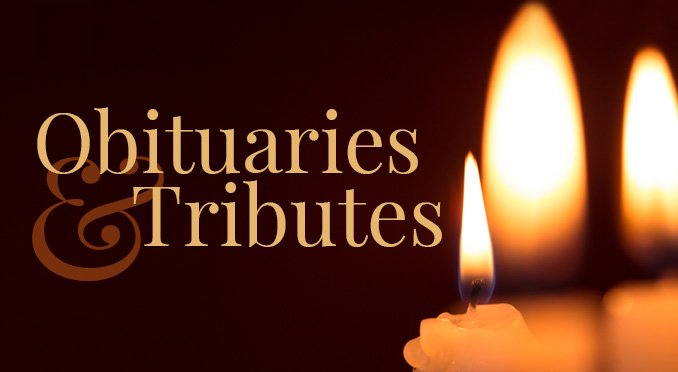For thousands of years, funerals have been a means of expressing our beliefs, thoughts and feelings about the death of someone we love.
The funeral you are about to plan should be a meaningful, personalized tribute to the person who died. Think about their qualities and what he or she meant to others. Consider their passions, hobbies, pastimes, likes, dislikes. How can you capture this unique life?
The funeral ceremony does the following:
- helps us acknowledge that someone we love has died.
- allows us to say goodbye.
- helps us remember and encourages us to share those memories with others.
- offers a time and place for us to talk about the life of the person who died.
- provides a social support system for us and for friends and family members.
- allows us to search for the meaning of life and death.
- offers continuity and hope for the living.
Planning a Funeral is a Privilege
As you consider the funeral, try to remember that planning the funeral of someone you love is not a burden, but a privilege. Think of the funeral as a gift to the person who died. It is your chance to think about and express the value of the life that was lived.
This is not to deny your need to mourn and to embrace painful feeling of grief in the coming days. You may feel deep sadness as you plan this funeral and begin to acknowledge the reality of the death. But when all is said and done, you will also feel deep satisfaction that you have helped plan a meaningful tribute to someone who has meant a lot to you.
Making the Initial Decisions
As you begin to discuss service options, you may be faced with the conflict of honoring the wishes of the person who has died as well as your own wishes as survivors. While it is natural to want to meet the requests of the person who died, do consider changes or embellishments that will be helpful to your family. Remember-funerals are for the living and if you have a need, now is the time to express it.
Choosing Someone to Lead the Ceremony
Experienced funeral leaders (typically clergy) often have certain ways of doing things and may feel constrained in their ability to go outside the bounds of their liturgical tradition. Often the faith’s prayer book and church rules and traditions dictate service options. But a religious service doesn’t need to be an impersonal, cookie-cutter service straight out of the prayer book. Talk to your clergyperson about appropriate ways of personalizing the ceremony. Perhaps special readings and music can be added.
What Kind of Service Will You Have?
You can choose from a variety of funeral service types and formats. Let me remind you that there is no one right way to have a funeral. Just as grief has many dimensions and is experienced in different ways by different people, funerals will be unique also. A funeral should simply “fit” the person who died and the family and friends who survive him or her. Feel free to honor your loved one without following rigid rules or being worried about “what’s usually done.”
General Service Types
- Traditional Funeral Service - A service held in the presence of the body, with either an open or closed casket. A member of the clergy usually officiates and the service is held two or three days after the death. A visitation period often precedes the funeral. The service is usually held in a church or funeral home. There is usually a religious message to the ceremony. After the funeral there may be a procession to the gravesite or crematory, where a brief committal service concludes the ceremony. The family can decide whether this should be public or private.
- Memorial Service - A service held without the body present (though the cremated remains may be present in an urn). Disposition of the body may take place either before or after the service. Some are not held until weeks or months after the death. The service may be religious or non-religious. There are many different types of memorial services and they may be held in funeral homes, churches, private homes, community rooms or outdoors.
- Celebration of Life Service - Such services vary widely in content and format, but they tend to be more personalized and more upbeat. The only rule seems to be that no rules apply.
- Committal Service - A service held at the gravesite or chapel, before the body or urn is buried. The committal is usually in addition to a funeral or memorial service and is the occasion at which those in attendance say their last goodbyes. The committal service is often brief. However, if this is the only service to be held (grave side service), this may be more lengthy and include additional elements of ceremony. Children often find this helpful in that they are able to see where the body goes.
Planning a Meaningful Funeral Experience
The Elements of Funeral Ceremonies:
When mere words are inadequate, many people find the ritual of ceremony healing. Consider including some or all of these elements as you plan a funeral ceremony that will be meaningful to you family. Many find that the more elements of ceremony they include, the more healing the funeral.
- Visitation - Is a time for family and friends to support one another in their grief. The body is present, allowing you and other the privilege of saying goodbye. Receiving friends activates you support system and allows others to express their concern and love for you.
- Eulogy - It acknowledges the unique life of the person who died and affirms the significance of that life for all who shared in it. It is the time to give thanks for a person’s life and to honor their memory. This is not the time to bring up painful or difficult memories but the good we can find in all people. You could choose to ask several people to speak and share their memories or have people attending the funeral stand up and share a memory of the person who died.
Many times, the officiant asks if any of those present would like to share a memory or story. Often these stories bring some laughter to the service. - Music - Is an important part of many social rituals. One of the purposes of music is to help us access our feelings, both happy and sad. During the funeral ceremony, music helps us think about our loss and embrace our painful feeling of grief. Consider including music that was meaningful to your loved one.
- Readings - You may want to choose readings that were favorites of the one who died. You may also consider poems, scriptures or readings that will be comforting to those in attendance.
- Memories: Are the most precious legacy we have after someone has died. The family can choose to provide opportunities for memory sharing beyond the eulogy. Some alternatives include:
Memory Basket, people can write down memories on paper and place them in a basket. Some of these can be read during the eulogy or put on a board for others to read.
Memory Tables or Boards, families can display memorabilia and photos. Physical objects that link mourners to the person who died can be displayed (e.g. photo albums, fishing tackle, or a favorite piece of clothing). Memory tables give mourners a good place to gather and share memories of the person who died.
Memory Letters, family and friends may write a personal letter to the person who died. These letters can then be sealed and placed in the casket or displayed near the casket for mourners to read. - Symbols - Say for us what we could not possibly say in words at this time.
- Flowers - represent love and beauty. Accepting flowers from friends is a way of accepting their support.
- Food - is a way of nurturing mourners and demonstrating their support.
- Candles - the flame of a candle represents the spirit. For some, it also represents life’s continuation beyond death.
- The Gathering or Reception - Most funerals are followed by a gathering of family and friends. This special and essential time allows yours family and friends to tell stories, to cry, to laugh, to support one another. It is an informal time of release after the more formal elements of the funeral. It is also a rite of passage back to living again. It demonstrates the continuity of life, even in the face of death.
Just be sure that the activities center around the characteristics and memories that endeared this person to you. These and the sharing of them are where you will find comfort in the days ahead.





